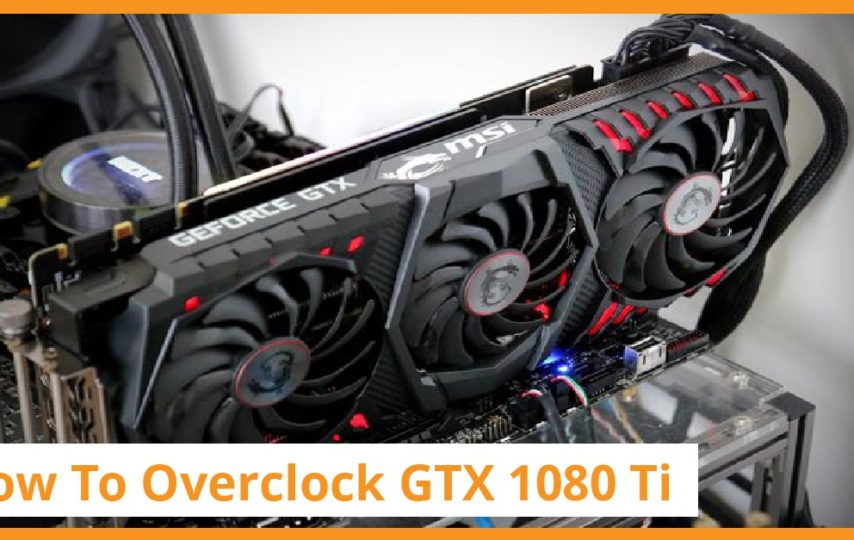Before you overclock GTX 1080 Ti, consider how much power it will consume. “How much power do I need?” is a topic that pops up frequently on computer message boards, and the answer isn’t a simple “X amount.” Make sure you have a good power supply before overclocking anything solely for the computer components. It can mean the difference between a computer that operates smoothly and one that crashes while gaming. A high-quality power supply with a smaller wattage can go a long way than a low-cost, 1000-watt off-brand power supply. It’s something I’ve seen a lot. Just because it says 1000 watts on the label doesn’t guarantee it can deliver 1000 watts for an extended period.
If you are going to overclock the GTX 1080 Ti, first of all you need to know all the hardware’s of your PC are compatible with each other. Recently I found a great website related to computer hardwares. I found an article related to the best CPU for 1080 ti. Maybe this guide will help you to find the best cpu for your GTX 1080 Ti graphic card. Now let’s move to the next step… scroll down and read more!
Essential points of GTX 1080 Ti overclocking
you should raise the temperature limit to its maximum setting. It is because it gives you a little bit more ly room on fare as getting you more potential maximum overclock.
After you’re done, you can always set it back to default and play with f-words.
Put your fan on an aggressive curve, or just put it maximum speed just for the overclocking part all you once you’re done with that finding maximum number.
You may always revert to the factory settings and work from there; RAM is slightly different from other cards.
There’s only one company to next memory, which is micron pretty much your various in between 400 and 800 megahertz. Not many people have gotten much higher than that now. Remember, this is a double data rate. So 400 is 800, so keep that in mind. OS just as versed typing in going by 100 so 100 150 or 200 and this is more forgiving so what happens usually is you to get artifacts on the screen.
We’re going to get weird jitters, almost like big flashes, and then the drivers might crash, but usually, your video card doesn’t crash if you go slow enough, and now if you giant jump, of course, it’s going to hit.
We go 25; you probably won’t get a hard crash from overclocking, so here I know my limit is 400 or very close to 400. So I’m putting it to 375 is pretty much where my safe number is from running at 400. It worked for about 10 minutes.
You know, a bunch of loads if crashed you want to run the benchmark oil.
Once you find your maximum number, you want to set it back to the default of zero, and then you want to go ahead and do you core overclock now.
It is based on your boost number, says this number goes on top of that. Unfortunately, as I explained in the boost 3.0 video, the core is not very forgiving, so you’ll see a hard crash when it does hit.
I was going at 25 times, and when you get to about 100 or so, you want to back it off and get down to like five at a time.
Now once again, this is going to depend on your boost clock out of the box entirely, so if your boost clock is, say, nineteen hundred and you add a hundred to that, you’ll get up to two gigahertz.
So I know my hard limit is 2012 megahertz without a voltage increase now; I’ll use that; I haven’t talked about voltage at all here, but you want to find your maximum numbers without changing your voltage. Then when you get to the very end, when you have your final numbers go ahead and add that exterior percentage of voltage to see if you can make that number stable. Of course, when you add more voltage, you’re going to create more heat.
It’s entirely up to you as far as we want to do there, so I know 2012 megahertz is basically where this card stops it, and Boost doesn’t take effect in a sense, the numbers don’t change because it’s all going to be based on your power target limit and voltage limit.
If I type in 200 made go 200 megahertz higher, it may go a hundred thirty megahertz higher based on how much power is available. How much was temperature used currently, and what the voltage is set to this was out of our control.
We know you can do about it, but it is good to see where your maximum number is, so you type in 150, and the number is not representative of one hundred fifty megahertz overclocked.
If you raise voltage or lower the temperature, that may reflect better once you achieve your maximum overclock as far as core goes and memory goes. So what to do is go ahead and set both parameters.
You want to set your core clock to close the maximum you can achieve for stability, and then memory, you want to do the same thing.
When you do both simultaneously, there are more things at play like temperature makes a difference, voltage makes a difference, and power limit makes a difference, and that’s how it boosts 3.00 operate. You may not achieve the same results that were independent of each other.
So you may have gotten a 500 megahertz to overclock on the memory. But when applying on the higher overclock for the core, it’s no longer stable.
But this method allows you to creep up to the maximum number you were at to make sure everything is fully stable. So it may seem as challenging then you play some games an hour into the game again, it crashes.
Now, this can be common. Just because these benchmarks are stable does not mean that all your game is going to be tough. All your frame rates are going to be stable.
So you want to that you do the balance and see what happens so far this knows my total was 2012 megahertz without racing the voltage, and so I set to 140 to get it about 200 megahertz, and then for memory, I know it was stable at 400 which is 800 double data rate.
I put it to 300 to see if that was stable, so anyways, I hope you liked quick overclocking guides for the GTX 1080 TI. Your result may be different than mine.
Conclusion
The GTX 1080 Ti is pretty similar to the rest of the Pascal range when it comes to overclocking. It doesn’t accomplish the same level of overclocking as the 980 Ti and other 900-series cards, although that’s partly due to architecture variations. Although Pascal is identical to Maxwell, Nvidia has added new functions, and the stock clocks are significantly higher. There are still limits to how far silicon can go, even with the process shrinking from 28nm to 16nm FinFET.
The GTX 1080 Ti voltage has been set at 1.093v by NVIDIA. You cannot exceed this without making significant changes to the card, regardless of the brand. Also, because of the way Boost, 3.0 works with thermal, power, and voltage limits, your maximum cannot exceed 2.2GHz.





